On friday I had a trip to London, talking finance, equity shares, next steps for a major project all very heavy stuff. On the way back from the meeting one of my good friend and business partners and I stopped by at The Royal British Society of Sculptors on Old Brompton road.
The outside of the building had a reactive sculpture that opened mechanical umbrella type flowers that wound up the side of the building like a vine so I knew this would be interesting.
Inside the main exhibits were suitably technical yet artistic. One was the wearable tail, a robot fashionable tail that was really more like Second Life than south kensington. Others were water bubbles generated in a tank to create the shapes of numbers, which was a forerunner of the glowing ball structures that rise and fall with the stock market at the London Stock Exchange.
Out the back there were a set of design concepts for a competition that would be the next installation to replace the flowers out front.
I was immediately drawn to this model
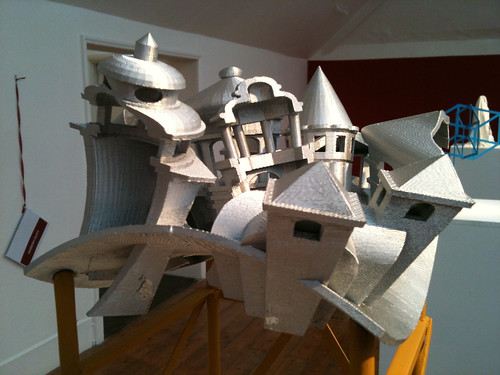 By Bruce Gernand FRBS
By Bruce Gernand FRBS
It was a computer designer 3d model that had been rendered using a 3d printer in order to be able to see the concept before it is rendered in full size aluminium.
So there I was in a sculpture society looking at a physical rendition for a virtual model that would become a full size one. That was the winner for me as you can imagine.
I left a comment that I would like to be able to share the experience of exploring the virtual model as well as seeing the physical model.
With HP doing deal with Stratasys moving into the 3d printing market this sort of thing will become a lot more common!
Crowdsourced digital recreation of Olympics 2012?
I managed to get this idea into a tweet of 140 characters. Which I guess means that its not too bad an idea and easy to explain. The original text was
“2012 olympics spectators to share their videos. Pump video into project natal. Mocaped events rerendered in vw. Bypass agencies”
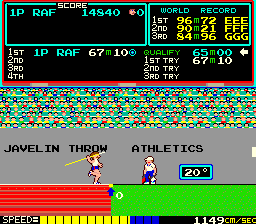
Image from Konami Track and Field at arcade-history.com
To explain the how and the why of this a bit more now the elevator pitch is done.
The London 2012 olympics is a huge event that will be taking place in a world that is already heavily immersed in social media. People are already willing to take photos, share their experiences. A mass event like the Olympics will mean huge numbers of people sharing that experience from their mobile devices at the event.
On the other hand we have an event that has lots of international politics around it, huge sponsorship deals to guarantee coverage and to also pay for the logistics of the event.
We want 2012 to be the best games ever. However we are in a cash strapped world coming out of a major recession.
One of the things I have majored on over the past few years is the recreation of sporting events (and other training events too) from data and descriptions of the event. This is in part a technical interest but also one where I know that sport is understood by most people, so representation of sport in new ways helps them understand things like virtual worlds, social media and games.
I got to thinking that if the various bodies and rights management people controlling the Olympics flow of content and data have the whole thing locked down, negotiated and controlled but are not doing anything forward thinking now using the emerging technologies then we need another option.
A crowdsourced and opensource approach may just be one that at least demonstrates the potential power of the crowd covering the event.
The basic premise.
2012 a high percentage of people able to attend the olympics either on corporate tickets or paid for will have good mobile equipment, cameras etc. Network coverage will be good as it will be boosted for the event too. So there will be a vast amount of tweets, pictures, videos, streaming video, blog posts, facebook chat etc flowing in and around the events. That will of course not be as good as the TV company coverage but it will still have a great deal of potential.
Taking some of those images, videos etc and utilising technology to work out which athlete is where, what event was this, and even motion capture the individuals at events using Project Natal (like) technology means we have a great deal of data available to digitally recreate the games in the public domain. Its the sort of approach Photosynth takes to recreate imagery from mass use of digital media. To feedback to the crowds with data driven augmented reality applications etc. It is a little way out, but it is not impossible and there is a lot of technical and social innovation that can occur in the next 2 years with web, mobile, virtual worlds and games.
I think London 2012 needs a focussed and serious look at the things that can have a huge impact to the coverage and popularity of the games. The things I am considering here are homebrew ideas. They can be done very cheaply by anyone. Their is huge scope for something much greater to be done for very little extra cost and effort in the scheme of things by the powers that be.
Capture, Analyse, Recreate, Share. Yes CARS for the olympics.
Plato, a clever bloke.
I have seen this quote by Plato flying around a lot recently. It is particularly apt and correct when trying to help people come to terms with the benefit of gameplay in all fields.
“You can discover more about a person in an hour of play than in a year of conversation.”

Now bear in mind we have the ability to play and interact with one another on all sorts of digital channels. Social media is about conversation of course, but it is also the social side of gaming, be that a dedicated game or people choosing achievements that mean something to their friends and playing, competing and cooperating. e.g. unusual photo competitions on flickr.
Imagine too that we are playing multiplayer games. So you get to learn more about several people in 1 hours gameplay online than several years worth of individual conversation.
The amount that we reveal about who we are online through these gaming, and in the case of virtual worlds semi-gaming experiences should not be underestimated as a powerful reason to interact. The institute of the future has a post on Avatar Maximization around how people react to us and our digital representations.
This is not really just about identity, though its clearly a subject to consider as we see on New World Notes about real life versus made up vs augmented names. It is about what happens when humans communicate in ways other than purely talking face to face.
Discovering more about motivations, styles of operating and preferences do shine through in our gameplay. Games of all sorts help put people at ease and when at ease their true self shines through. Not all games of course, in poker the aim is to not give anything away and keep that poker face. However, the method by which you control your “tell” or discover others is equally enlightening.
I suggested in my predictions that Games as Work is a way forward and it would appear that Plato agrees (sort of).
It could well be that with fantastic creative tools like Unity3d and virtual world toolkits like Opensim we will indeed see even more “gamification” as David Helgasson Unity3d CEO has suggested
That can only be a good thing for understanding our colleagues, friends and competitors.
Virtual World/Augmented Reality Olympics, World Cup?
In a report just published by EngageExpo on the future of virtual goods there is an interesting comment by Tom Hale the Chief Product Officer at Linden Lab (Of Second Life fame) that says.
“Continue to see large brands experiment with engagement based investment to maximize exposure during zeitgeist events, for example the Olympics.”
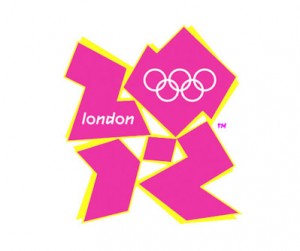
Now I am hoping that it really does get taken seriously by the organizing bodies. The ways of representing sporting events are open for massive innovation.
I wrote that here in April and here and here in 2008 on eightbar and have proved the potential with the Wimbledon work since 2006 in Second Life.
I also received an invite to a conference (via Layar) for the M-Football conference whose aim is to ensure that the 2010 world cup (soccer) acts as a catalysts for mobile applications (inluding augmented reality ones).
Now with 2 years to go it really is time for the UK in particular to wake up and start doing things. It wont be enough to throw some things into Second Life or a quick Facebook app on there 2 mins before the event.
We are all here to help and to work that direction. We can indeed make this the best Olympics ever.
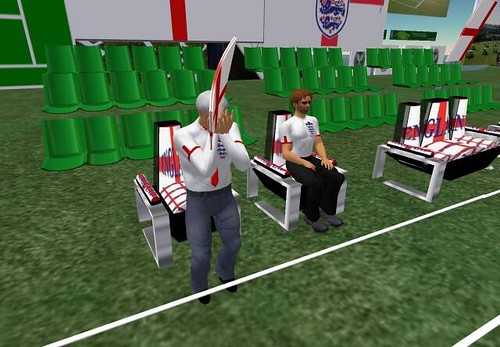
Back in 2006 when England went out of the World cup Yossarian and I shared the experience enhanced with Second Life as a back channel at the prototype Wimbledon. It was simple, effective and very memorable (and I had Avatared up as Sven (The coach).
Head in hands as we crashed out.
Imagine what we can all do if we actually plan this !
Apologies to any agencies working on this in earnest already. I do get the feeling we have not really started yet though.
A decade of gaming innovations
Over at Play Think Learn Nicola Whitton has described a good set of 5 major innovations in gamin we have seen this past decade. I was going to do a retrospective post, but Nicola’s one pretty much covers it so check it out.
Interaction, Casual, Mobile/AR,ARG and MMORPG growth feature.
I could add one that surprises some people. The move away from the pursuit of more and more “realistic” graphics at all costs.
Many people who are new to games or are suddenly taking note will start with the assumption that we need more and more photo realism and that if its not high end visuals its not a game. In part this is because the non gamers can relate to photo realism as being somewhat more understandable. There is of course room and need for these highly “real” visual games, Gran Turismo, Forza 2, Assassins Creed 2 etc. However the sideswipe the Wii made and the rise of the casual puzzle game (as you point out) thrive on not being highly rendered. For gamers The Legend Of Zelda:Wind Waker going cell shaded could be said to have tipped this trend (around 2002). So great gameplay and engagement through simpler visuals with Crayon, Toribash, Loco Roco etc has been a feature of games evolution. Then of course there are the hybrids such as the fantastic Little Big Planet whose design ethos was to look like real things but handmade from craft material and junk.
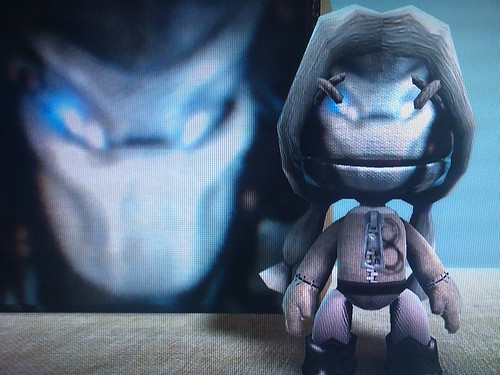
Of course Play,Think Learn had already written about this with Just My Imagination but I thought it should be in the list of the decade too 🙂
Those muppets prove they are not muppets
This whole Disney/muppets campaign for a volunteer workforce is really interesting rich web design with user created/personalized elements. Take a look at the main experience at the end of this short video.
The viral nature of how to get people to share with one another (as I am here) is also very interesting. There have been some similar pieces of technology most notably the BBC’s psychoville which I have to admit I was caught out with whilst on holiday in May by that pesky Roo 🙂
BTW, in case you are not familiar with UK slang its became quite common to call someone a muppet if they were a bit inept. Just watch Lock Stock and two smoking Barrels.
Interesting control mechanisms: Cars, Rockets and Choppers
Props to @infiniteunity3d for tweeting this. This is an example of using a different control mechanism to enhance a virtual experience. In this case it is slot car racing. It is built in Unity3d which once again shows the power to just be able to get on and try out the ideas rather than battle the middleware. (I am sure it had it moments though 🙂 )
Slot car racing is a very tactile experience, the friction of the pickup on the rheostat and the precision of trying to get just the right speed for a corner is the charm of slot racing. Scalextric was a big part of my childhood.
AlabSoftware have hooked the controller up to a set of slot racing cars. They did not just stick to a top down view either it is a full 3d model (as that is what Unity3d is very good at indeed).
Nearly the first thing I built in Second Life was a slot car racing system. I say nearly because other things like the tennis got in the way. My initial thoughts were to build a construction set in a world that was by its very nature a construction set. Being able to provide limited resources (track pieces) and specialized types of car etc had the makings of an economy and toolkit within the economy and toolkit.
There is a definite movement to more haptic control interfaces, none more so than the blend that has been created and released on the world at CES 2010 with the Parrot AR helicopter. A wirelessly controlled flying toy/copter that you control with your iphone and that also provides video and data feedback to you with various headsup displays and tricks. It is a form of AR, but like most AR the term gets used for all sorts of things.
Sitcking a camera on a vehicle is of course not a new thing DCJ put a wireless camera on his rocket at the launch day we had back in 2008 but the Parrot AR Drone is a very nice evolution and combination of technology and design
Xbox 360 Avatar Arcade (Ps3 Home-a-like?)
Thanks to @josholalia for tweeting “Not for me. But I’d pay to watch @ritajking duel @charliechu & @epredator RT @majornelson: Game Room Trailer here-> http://bit.ly/5FAIJq” and pointing out the video (via Major Nelson) of the future of the xbox 360 arcade game room.
This is the start of a virtual world usage of the 360 avatars to let you walk up to arcade cabinets (by the look of it) and play the old school arcade originals. Arcades where where I grew up and hung out and they were a very social place as you could not play the games all the time. I liked it when I saw the walk up cabinets in Playstation Home and I have to say this bears more than a passing resemblance to that just on the 360 😉
It sounds from the blurb (link to a word doc on this page) too that this is a customizable room that you place your arcade cabinets in. “invite friends into your custom arcade to check out your collection or visit their game room”.
It is also cross windows and xbox.
So what Microsoft has cleverly done is repackage the old arcade games (which has been done more than once) but added a highly social layer to it. Games whose high score table was only ever visible for the day in the arcade until the power was turned off will now be available all over the world.
One other line I liked (though would have preferred this to not be in a word doc !) was “Challenge friends to beat your high score by sending custom challenges and taunts across platforms”.
Customer challenges and taunts – fantastic.
It is generally accepted that the Xbox Live environment has been a major reason for the 360’s success. It is certainly why I buy more games for the 360 than the PS3. Sony has retro fitted trophies and achievements and innovated by adding Home. Microsoft started out with great connections between games and is evolving the virtual world connections and representations based on those connections. As we are all saying and learning this is all about people first tech features second.
Augmented Reality Iphone does an Iphone
This is a great promo done for an AR application featuring an Iphone. What is particularly interesting is the ability to interact with the virtual iphone one the iphone and spark up applications. Take a look :). It is by Ogmento
Fresh Decade Fresh Fish
I have a mini side project for an iphone application that I want to get submitted as soon as possible this year. Mainly this is to test the process. It has caused me to start doing some things that are clearly not my forte. i.e. Graphic design. I have no problem using any of the graphic design tools, and I really quite enjoy them, but my results are always…. well… meh.
For the app I needed to create some original visuals, as for a proof of concept I had used some 3d models from elsewhere just to get a feel for this. What I was aiming for was something fishlike.
This is what I have got too so far using the wonderful Cheetah 3d on the mac.
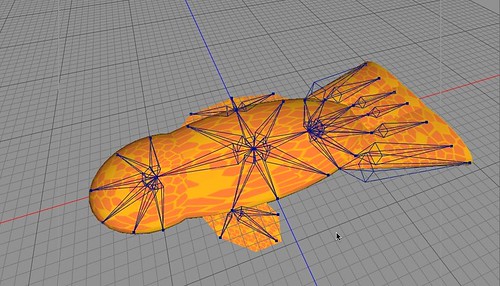
Now bear in mind I am a techie not a visual designer, but I did have to use a few things here.
I created the mesh from initial prim shapes in cheetak, then joined and imported them into a single mesh.
I created a set of character joints, the blue skeleton elements showing then had to remember ho to create the skeleton tag on Cheetah and drag it across to the properties to bind the skeleton to the mesh. (All this is bread and butter stuff to a good designer and animator of course!)
The texture, such as it is was using photoshop elements to create a stained glass window effect, then create another one one top of that in order to get some randomness and mess it up a bit.
Then I created some poses, remembering in Cheetah to create the pose once the root node for the pose had been selected. It was then a case of moving the joints around and saving each state.
Finally in Cheetah I created some animations, setting poses and timelines and key frames before saving the thing.
Then sparked up unity Iphone and dragged the poor fish like thing into the environment. Here the animations just played.
Hit publish and Xcode gets sparked up, the app gets deployed and running on the test Iphone.
Not a piece of code written, all config and clicking.
Of course now I can do what I know I can do. Write code to make the things happen in the way I want them too.
I will of course have to revisit the “Fish” maybe put some more bones in, try some smoother textures or try and draw it as one mesh not a bunch of lumpy prims. The trouble is I know it will never look as good as someone who really does this stuff.
Doing this though, and I recommend all tech and biz people give it a go in some for, does give you an appreciation of the visual design skills of those around you. I think too often it is taken for granted. I think the same can be said for good code though. The things under the covers, such as in this tool chain with the Mac OS, Cheetah 3d, Unity 3d and the Iphone OS none of which got in the way of the idea.
Trying to make things in different domains to ones we are used too, with tools that we are not skilled in using is a great way to understand what others do, what is good and what is mediocre. “Web 2.0 is Web Do” extends to many more things. Its a new decade give something a go, just so you either know how hard it is or you may find a new talent 🙂
